Have you ever wondered how statistically likely you are to get a single in Thomas Hall? Or how many coveted single-single suites are available on the University of Richmond campus? Or how equal, exactly, the gender assignments for each room type are?
Before housing selection in the spring, apartments and rooms are tagged as male or female by the Office of Residence Life and Housing. During selection, students can only select rooms assigned to their gender. Although gender flexible housing (GFH) is available, students must apply separately and ahead of time for that option, according to the Housing website.
The Office of Residence Life and Housing encourages "students who might have a need for GFH—especially those who identify beyond the binary, including but not limited to genderqueer, gender questioning, or trans students—to contact the Director of Residence Life & Housing in order to discuss their needs and available options," according to the Housing website.
Before selection, students can view available rooms and floor plans on the Housing website, but it takes time and effort to comb through each residence hall’s options. Often, the bigger picture of housing trends can get lost.
The graphs and data below aim to clarify that picture and give readers a look at some of the larger questions surrounding housing options in the 11 upperclassmen residence halls at UR, especially regarding gender.
Data for the graphs in this article were compiled from lists available on the Housing website, accurate as of April 1, 2020. The website states that the gender of rooms can change during the live selection process in the housing portal StarRez.
Apartments
Of the 120 groups of four that selected apartments this year, 74 were female and 46 were male, director of residence life and housing Patrick Benner wrote in an email. This means 61.7% of those selecting apartments were women vs. 38.3% men.
The Gateway apartments, which consist of four singles, were split 50:50 by gender, with 22 female apartments and 22 male, according to the Housing website. Thus, women were less likely to get Gateway apartments than men this year, unless apartment gender designations changed from what was posted on the website.
Information about the gender designations of UFA apartments, which have two double rooms, was not available on the Housing website.
Upperclassmen residence halls
UR’s traditional undergraduate population is 51% female and 49% male, with 1,490 female students and 1,419 male students, according to the 2019-20 UR Fact Book.
Enjoy what you're reading?
Signup for our newsletter
Despite more women participating in apartment selection and SSIR programs, the data used to create the graphs in this article still showed fewer spots for men than women in upperclassmen residence halls: 485 beds were available for men and 532 for women, meaning the available spots were 47.7% male and 52.3% female.
Benner wrote that the data available on the website was based on projections and the previous year's selection. The website data thus indicates that the housing office likely expected fewer men to select rooms in the residence halls than women.
This means that, in order for men and women to have the same likelihood of getting a certain type of room, about 48% of those rooms should have been assigned to men and 52% to women. If the rooms were split 50% to 50%, men would be at a small advantage because fewer men were competing for the same number of rooms.
Room types by gender: In terms of occupancy numbers, UR offers three types of rooms: singles, doubles and triples.

Fig. 1: A breakdown of available spots in UR upperclassmen residence halls for the 2020-21 academic year, by room occupancy and gender.
Note: Fig. 1 shows how many spots are available in rooms of each type, not how many rooms of each type are available. That is, there are eight triple rooms available for men, not 24.
“We know that single rooms are highly valued by our students so we keep a very close eye on this to ensure equity and balance,” Benner wrote. “We do this in conjunction with our triple rooms as well because we do not want to have any significant disparity in these offerings either.”
The percentage of available triple rooms to each gender was roughly equal to the percentage of people selecting: 52.9% of triples were female designated and 47.1% were male. Similarly, 53.6% of doubles were female designated and 46.4% were male.
However, only 47.6% of singles were female designated and 52.4% were male, which means that men were more likely to get a single than women, according to the April 1 data.
Room/bathroom configuration by gender: Fig. 1 is simple, but housing options get more complicated. For example, the first graph does not consider whether the rooms are attached to a suite, which would require coordination from multiple people.
Another nuance of housing selection? Bathrooms.
The following graph shows the gender distribution of different rooms according to 1) occupancy and 2) bathroom style.

Fig. 2: A breakdown of available spots in UR upperclassmen residence halls for the 2020-21 academic year, by room occupancy/bathroom style and gender.
Note: Like Fig. 1, Fig. 2 shows how many spots are available in rooms of each type, not how many rooms of each type are available.
According to this data, men had a higher chance than women of getting a single with a private/shared or suite-style bath, whereas women were more likely to get singles with hall baths.
Women had slightly higher chances than men of getting doubles with private/shared or suite-style baths, whereas men were more likely to get a double with a hall bath.
Suite style includes double-double, double-single, single-single-single and single-single suites. Rooms share a bathroom and common entrance, and students must know in advance who their suitemates will be.
Private/shared bath style rooms share a bathroom with a neighbor (or do not share a bathroom with anyone), but each room has a separate entrance. Students do not have control over who their suitemates will be.
Hall bath rooms share a hall bathroom with other students on a single-gender floor. This configuration is found in Atlantic and Pacific houses and Robins Hall.
Individual residence hall breakdowns: The following 10 graphs show the number of rooms of each style available in the hall, according to gender.
Note: Unlike figures 1 and 2, figures 3-12 show how many rooms of each type are available, not how many spots in rooms of each type are available.
Atlantic and Pacific houses: Atlantic is an all-male residence hall; Pacific is all-female. Their data is combined as they will be the only single-gender residence halls on campus in the 2020-21 academic year.
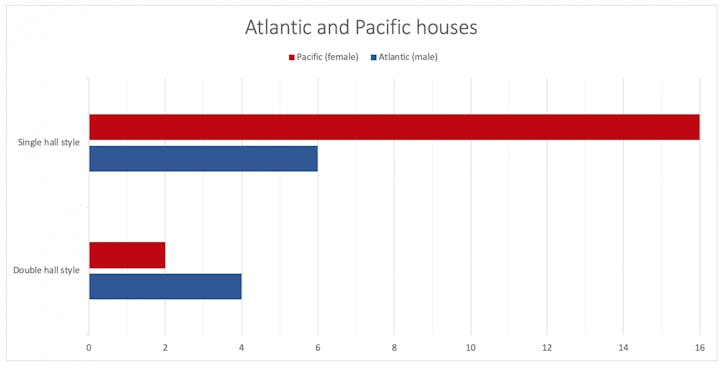
Fig. 3: A breakdown of available rooms in Atlantic and Pacific houses for the 2020-21 academic year, by room style and gender.
Atlantic and Pacific are not expected to become coed in the future, Benner wrote.
“We made the shift last year for each house to be occupied by a single gender to continue to offer single gender housing for students that desired this housing option while providing equity as each house offers singles,” he wrote.
Freeman Hall
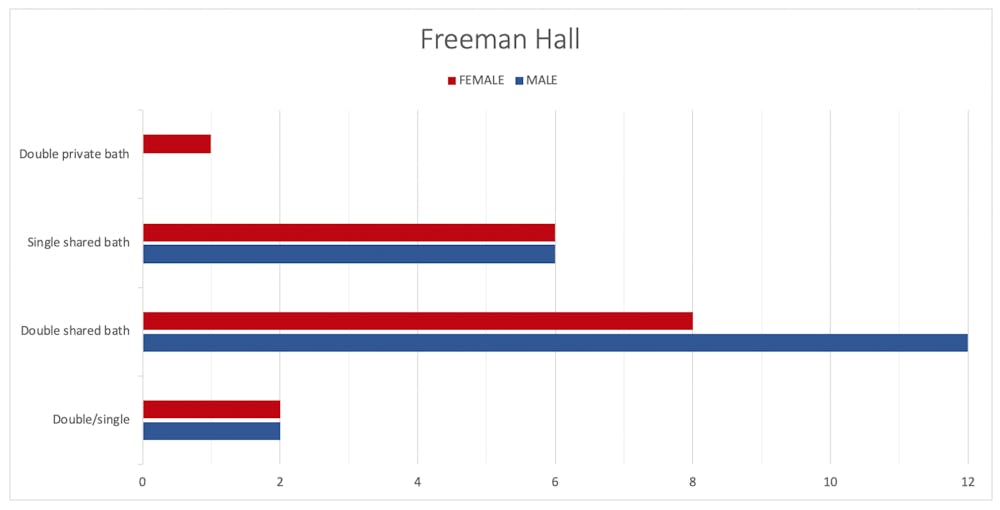
Fig. 4: A breakdown of available rooms in Freeman Hall for the 2020-21 academic year, by room style and gender.
Gray Court

Fig. 5: A breakdown of available rooms in Gray Court for the 2020-21 academic year, by room style and gender.
Jeter Hall

Fig. 6: A breakdown of available rooms in Jeter Hall for the 2020-21 academic year, by room style and gender.
Keller Hall
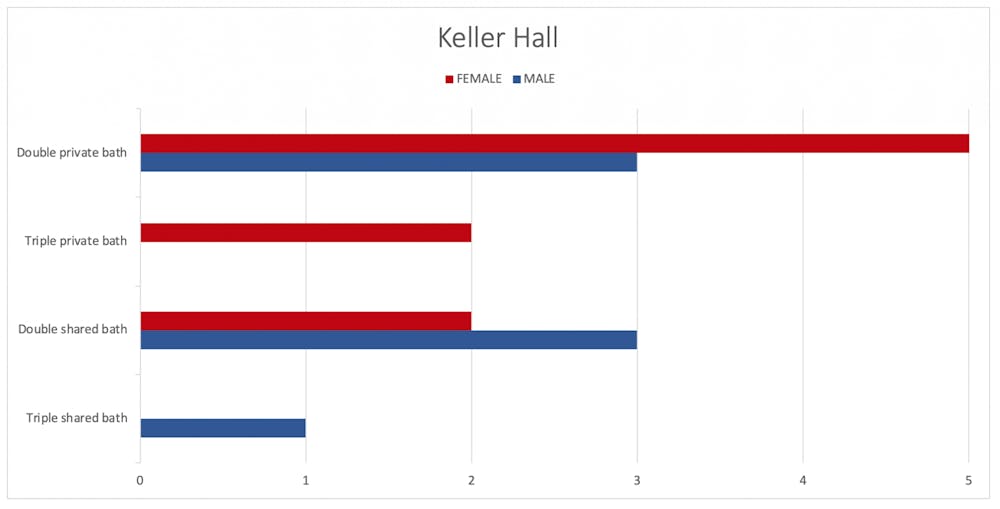
Fig. 7: A breakdown of available rooms in Keller Hall for the 2020-21 academic year, by room style and gender.
Lakeview Hall

Fig. 8: A breakdown of available rooms in Lakeview Hall for the 2020-21 academic year, by room style and gender.
North Court
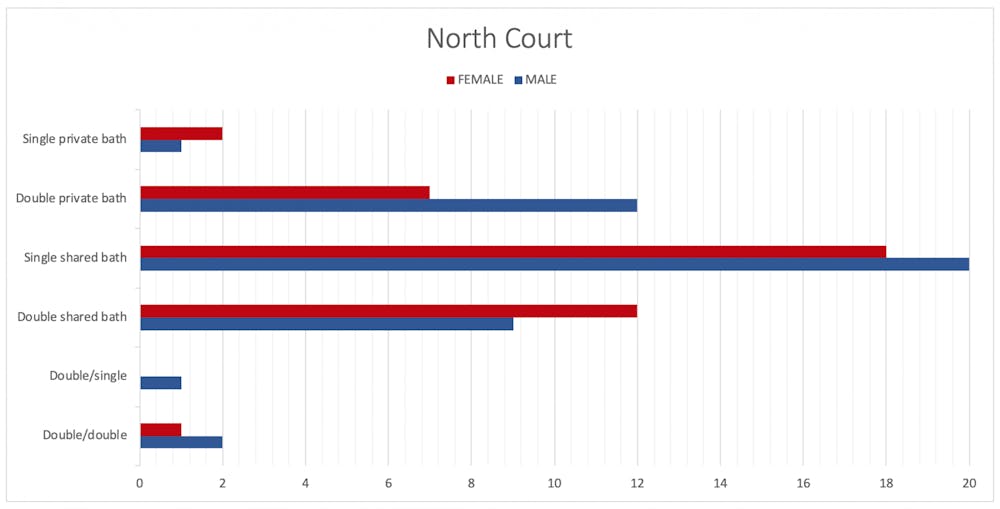
Fig. 9: A breakdown of available rooms in North Court for the 2020-21 academic year, by room style and gender.
Robins Hall

Fig. 10: A breakdown of available rooms in Robins Hall for the 2020-21 academic year, by room style and gender.
Thomas Hall
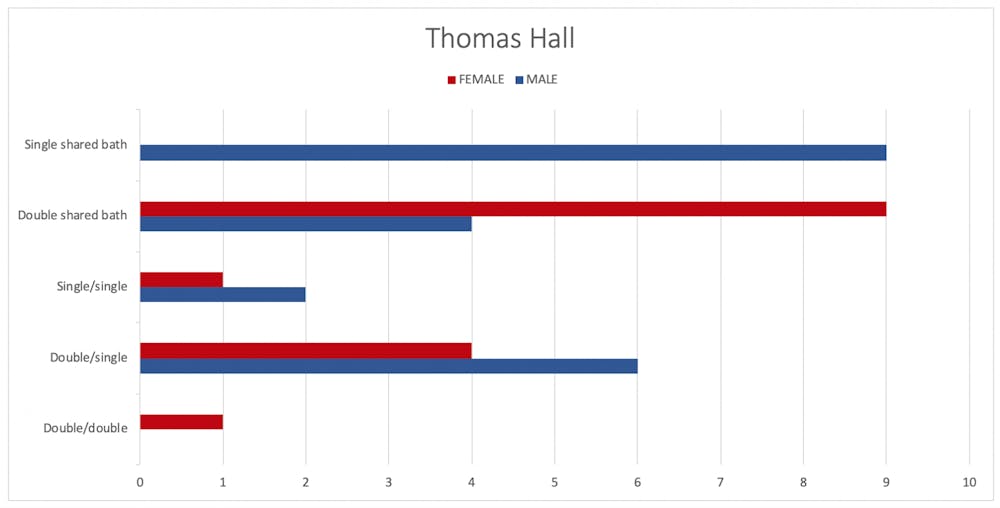
Fig. 11: A breakdown of available rooms in Thomas Hall for the 2020-21 academic year, by room style and gender.
Westhampton Hall

Fig. 12: A breakdown of available rooms in Westhampton Hall for the 2020-21 academic year, by room style and gender.
Notes on graph methodology: Rooms marked “Not Available” or “RA” were not counted. The third floor of Robins Hall is reserved for first-years, according to the Housing website, and was not counted. In a change for the 2020-21 year, South Court is reserved for the eight Sophomore Scholars in Residence programs, according to the Housing website, and was also not counted. The roughly 128 SSIR participants — each SSIR is capped at 16 students — do not go through the regular housing selection process.
A note from housing
The Office of Residence Life and Housing reviews gender assignments for the rooms each year, largely based on the number of housing deposits and applications it receives, Benner wrote.
“Each year we look at projections and models that give us estimates for assignments [of gender],” he wrote. “We must closely examine reports and building breakdowns to ensure there is an appropriate number of allocated beds for selections and assignments.”
Benner cautioned in an email that the information available on the housing website did not necessarily match what was available on StarRez during registration.
“The website is set up in advance of the applications and deposits based on projections and previous year assignments,” Benner wrote. “As we move to the live process within StarRez, the most accurate information is available within the portal for students to see.
“We keep a very close eye on equity in housing to ensure there is no significant imbalance [between genders].”
Benner also noted that more women live in apartments and participate in SSIR and LLC programs than men.
“This largely impacts how we then need to shift bed and room availability within the residence halls in double occupancy rooms and suites to provide equity and balance,” he wrote.
Benner wrote that the housing office had not seen a distinct trend in gender of the approximately 250 students who live off-campus each academic year.
Contact copy chief Caroline Fernandez at caroline.fernandez@richmond.edu.
Support independent student media
You can make a tax-deductible donation by clicking the button below, which takes you to our secure PayPal account. The page is set up to receive contributions in whatever amount you designate. We look forward to using the money we raise to further our mission of providing honest and accurate information to students, faculty, staff, alumni and others in the general public.
Donate Now


